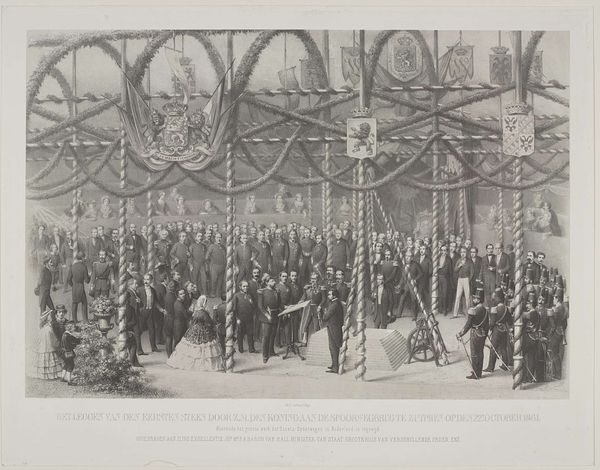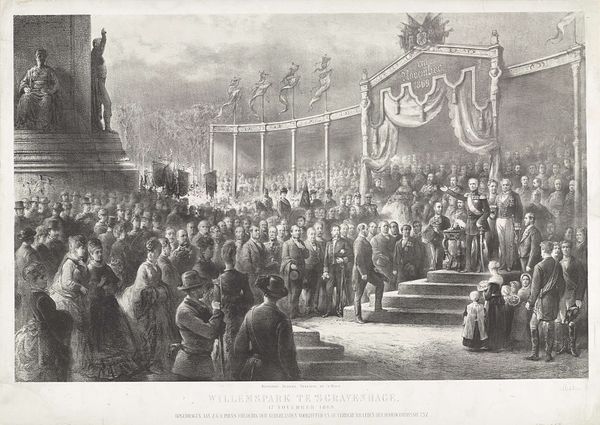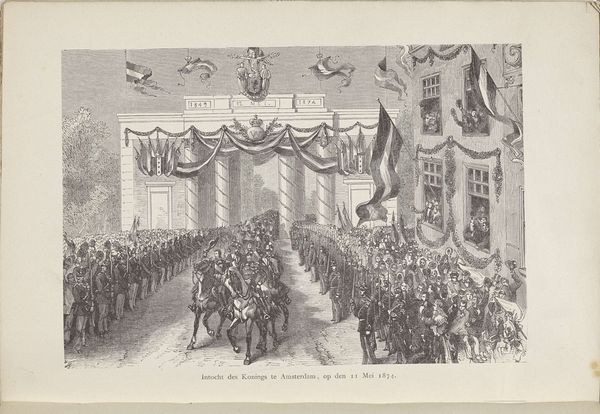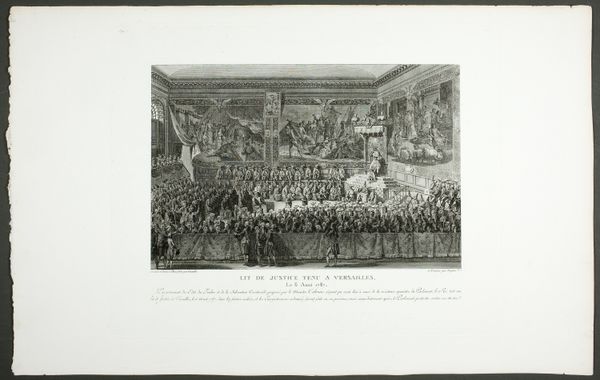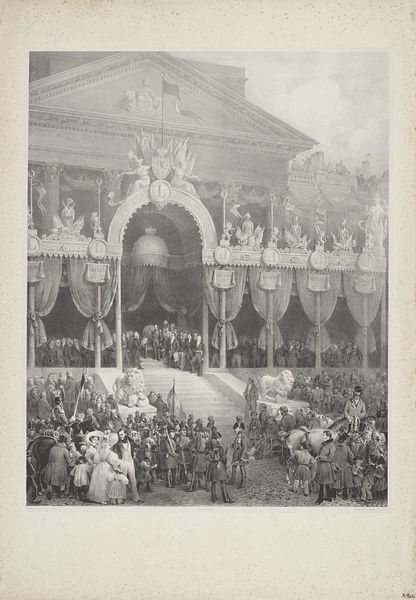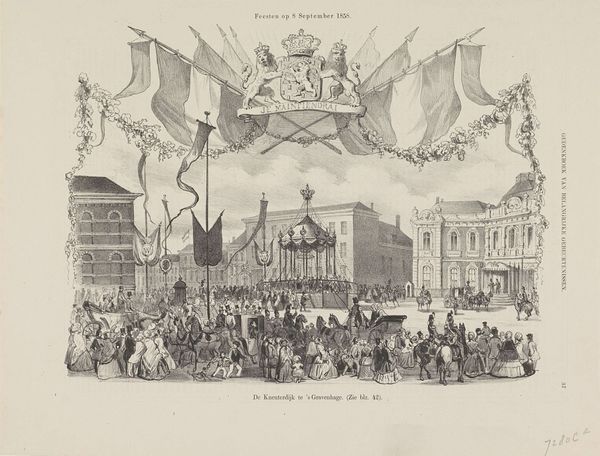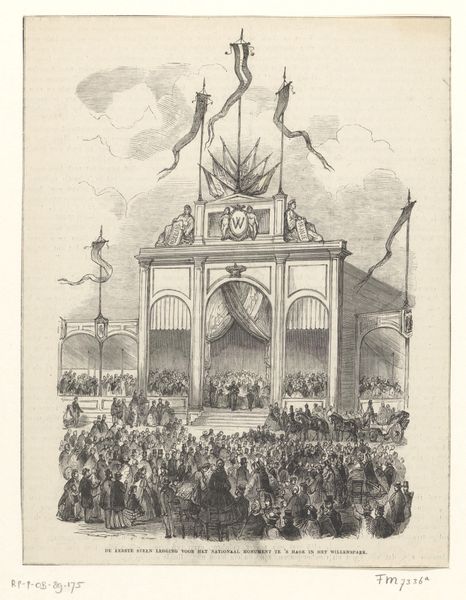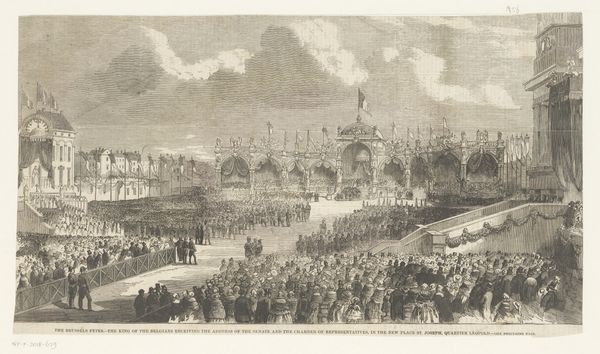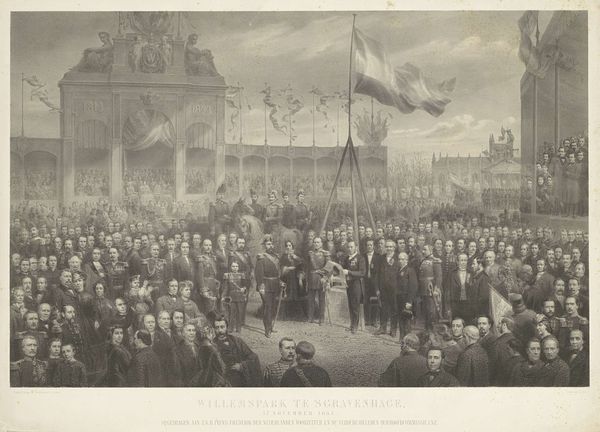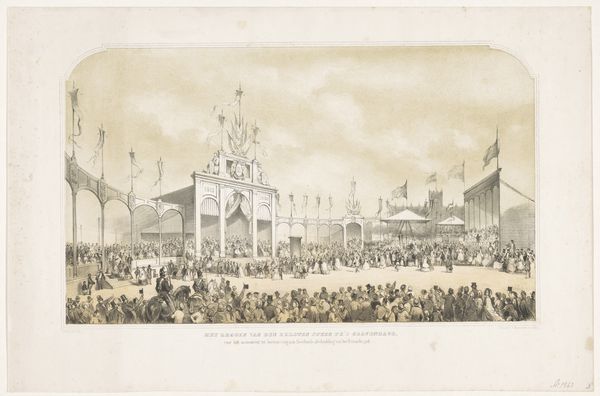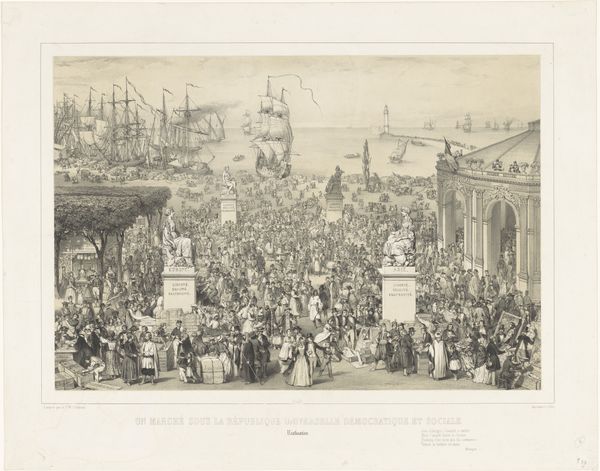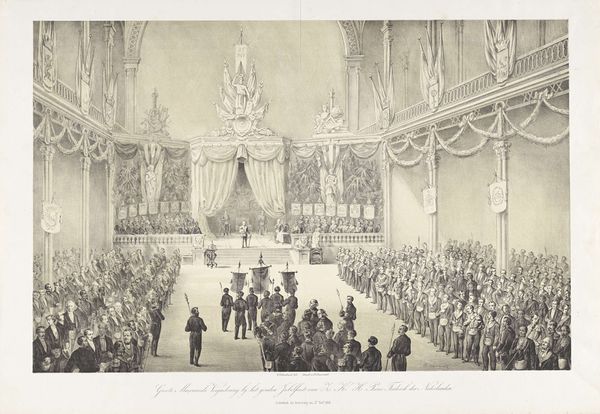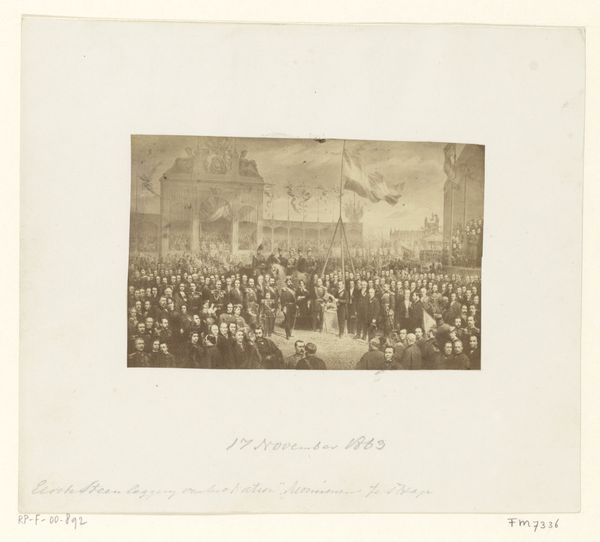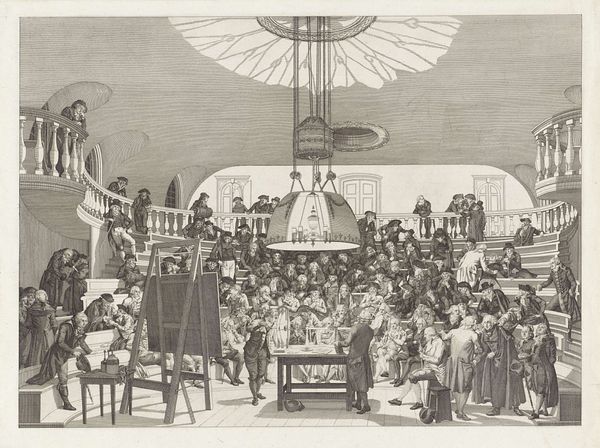
De plegtigheid van het leggen van den gedenksteen door Z.M. den Koning aan de Zuiderzeesluizen te Schellingwoude, 29 April 1870 1870
0:00
0:00
print, engraving
# print
#
old engraving style
#
genre-painting
#
history-painting
#
academic-art
#
engraving
#
realism
Dimensions: height 625 mm, width 802 mm
Copyright: Rijks Museum: Open Domain
Curator: This print, rendered in a meticulously detailed engraving style, captures "The Ceremony of Laying the Foundation Stone by H.M. the King at the Zuiderzee Locks at Schellingwoude, 29 April 1870". Editor: It's intensely rigid! Every figure, every flag seems precisely placed and utterly still. It feels less like witnessing a moment and more like attending a highly choreographed stage production. Curator: Indeed. The composition is masterful in its symmetrical arrangement. Notice how the artist utilizes perspective to draw the eye towards the center of the ceremony, emphasizing the King’s pivotal role. The gradation of tones, achieved through careful line work, gives a sense of depth. Editor: But who gets to perform on this stage and who is just in the audience? It seems everyone is well dressed, primarily white men, presumably leaders of some kind. Consider who is present in this depiction of progress, and, critically, who is excluded. I am also wondering if anyone knew this was an “anonymous” endeavor at the time it was taking place. Curator: From a formalist perspective, that question of anonymity leads to a consideration of style. This aesthetic prioritizes the event’s grandeur over individual artistic expression, which emphasizes national identity. Editor: Precisely. This work isn't just documenting an event, but constructing a narrative about Dutch ingenuity and royal authority. The very act of immortalizing this occasion in a print disseminated widely ensures it resonated beyond the immediate attendees. Curator: The balanced composition serves a similar function, projecting an image of order and stability at a time when many European nations were undergoing dramatic political and social transformations. The academic art style, so prevalent during that period, uses realistic visuality to create ideological strength and the solidity of traditional structures of power. Editor: Seeing such events today, it is very easy to spot a sort of false pageantry. It is hard not to superimpose such skepticism back onto this moment and see not authority but propaganda. In a time when debates surrounding infrastructure, wealth, power, and climate sustainability run high, there are very interesting conversations to have around works of art that lionize moments in civil engineering and the men that govern them. Curator: Well, whether lionization or propaganda, considering the artwork's detailed rendering allows us to think about historical context from a rich perspective. Editor: Absolutely, by juxtaposing art history with current critical theory, the goal isn’t to reach agreement necessarily, but rather expand the ways the print resonates now, and ensure it never becomes a purely historical curiosity.
Comments
No comments
Be the first to comment and join the conversation on the ultimate creative platform.
